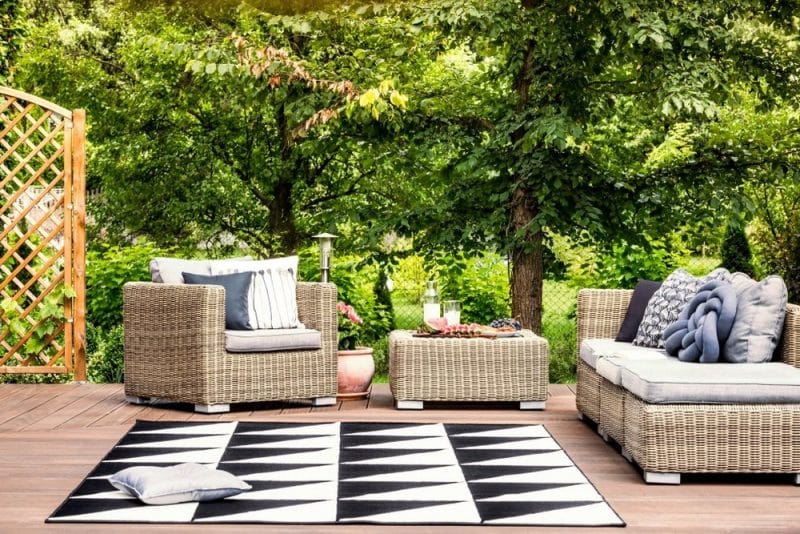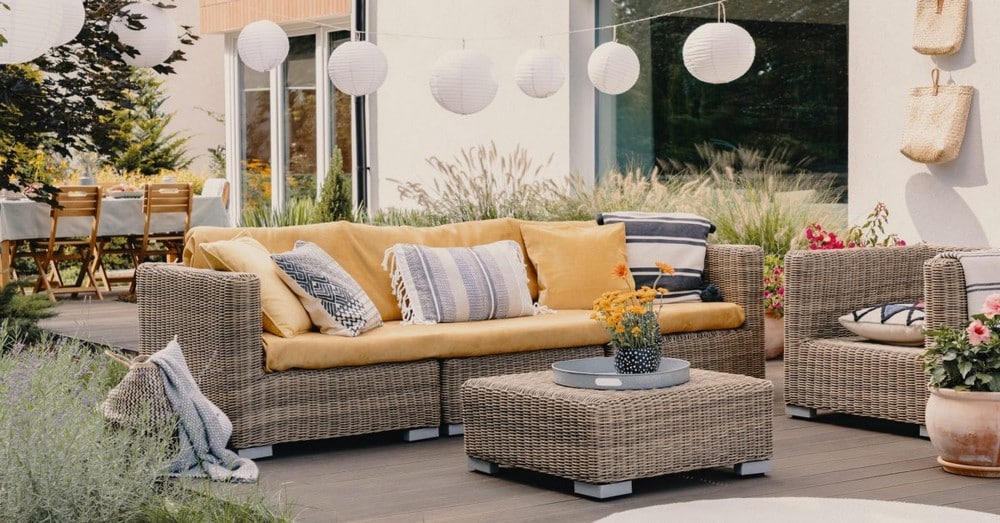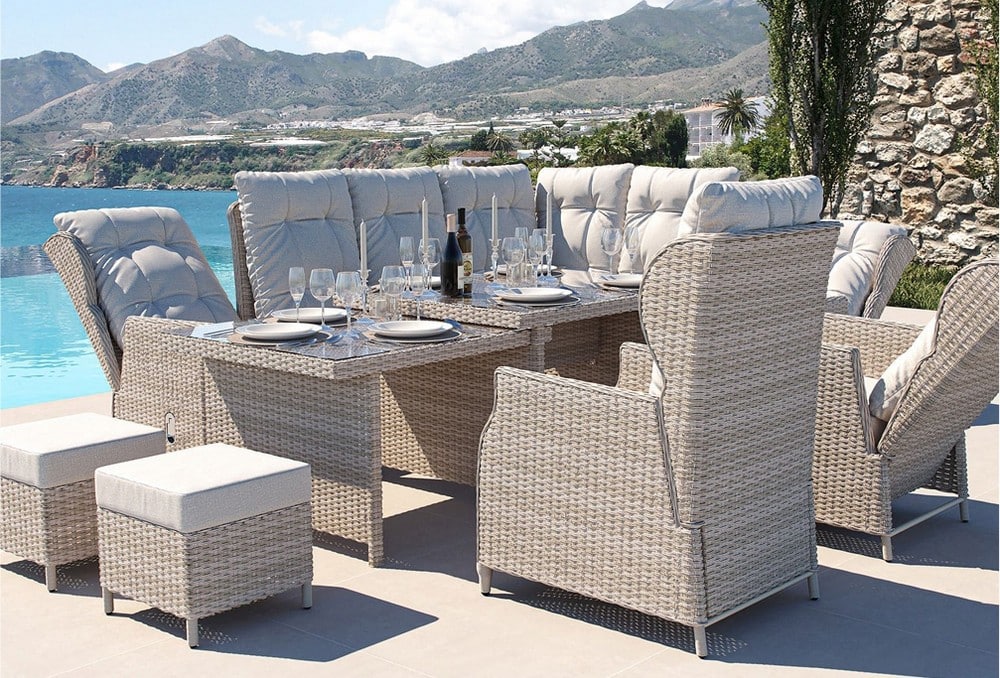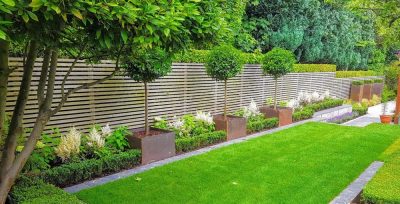
Imagine yourself outside during a peaceful sunset on your patio or deck, sipping your favorite cup of coffee or a glass of wine. There’s a gentle breeze, the sounds of nature surround you, and the soft glow of the setting sun casts a golden hue across your outdoor space. Now, picture yourself relaxing on beautiful wicker furniture—perfect for these serene moments. Wicker furniture not only enhances the aesthetics of your outdoor area but also offers comfort and durability. Before you dive into choosing the perfect wicker pieces, let’s explore how to select the right ones and how to care for them so they remain beautiful for years to come.
Why Wicker Furniture is Ideal for Outdoor Living
Wicker furniture has become a staple for outdoor living spaces, and for good reason. Its versatility allows it to blend seamlessly with any decor style—whether you prefer a modern, sleek look or a more traditional, cozy vibe. Wicker furniture can transform any garden, patio, or balcony into a stylish and inviting space. What makes wicker so special? It’s not just the visual appeal; wicker is also incredibly durable, lightweight, and comfortable. Whether made from natural rattan or synthetic materials, wicker furniture adds a touch of elegance while being practical enough to withstand the elements.
But what exactly is wicker? Wicker refers to the weaving process used to create the furniture rather than the material itself. Traditionally, natural rattan or bamboo has been used, but today, synthetic alternatives have gained popularity due to their increased durability and weather resistance. This means you can enjoy the timeless look of wicker without worrying about it deteriorating in the rain or sun.
How to Choose the Perfect Wicker Furniture
When it comes to selecting wicker furniture, there are a few key factors to consider to ensure you make the best choice for your outdoor space:
1. Understanding the Materials
First and foremost, it’s important to understand the materials used in wicker furniture. Natural wicker, typically made from rattan or other plant fibers, has a warm, organic look that’s hard to replicate. It’s perfect for those who want an authentic, earthy feel in their outdoor space. However, natural wicker is more vulnerable to weather conditions. Exposure to moisture can lead to mold and mildew, while direct sunlight can cause it to fade and become brittle.
On the other hand, synthetic wicker, often made from polyethylene or resin, is engineered to be more resilient. It’s resistant to fading, moisture, and temperature fluctuations, making it an excellent choice for those living in areas with harsh weather conditions. Synthetic wicker also comes in a variety of colors and finishes, allowing you to find the perfect match for your aesthetic preferences.
2. Exploring Styles and Designs
Wicker outdoor furniture is available in a wide range of styles and designs, so you’re sure to find something that suits your taste. Are you going for a coastal, beach-inspired look? Then opt for light-colored wicker with soft, airy cushions. If you prefer a more urban, chic aesthetic, darker wicker paired with sleek, modern cushions might be the way to go. The beauty of wicker is that it can easily adapt to different styles—whether you’re looking to create a rustic retreat or a sophisticated outdoor lounge.
Consider how your new wicker furniture will complement the existing elements in your outdoor space. Take into account the colors of your plants, the materials of other outdoor furnishings, and the overall vibe you want to create. Don’t be afraid to mix and match styles—sometimes a combination of traditional and contemporary elements can create a uniquely personal look.
3. Getting the Size and Proportions Right
Before making any purchases, it’s crucial to measure your outdoor space accurately. This ensures that the furniture you choose will fit well and enhance the area rather than overcrowding it. Start by determining how you plan to use the space. Will it be a quiet reading nook, a place for family meals, or an entertainment area for guests? The function of the space will guide your choice of furniture.
For smaller spaces, consider multi-functional pieces like a wicker bench with hidden storage, or a compact bistro set that doesn’t take up too much room but still offers a cozy spot for relaxation. For larger areas, you might explore sectional sofas, dining sets, or lounge chairs that can create distinct zones for different activities. Always leave enough room for easy movement around the furniture, keeping pathways clear and ensuring a comfortable flow throughout the space.
4. Comfort and Cushion Selection
While wicker itself is comfortable, adding the right cushions can make a huge difference in both the look and feel of your furniture. When selecting cushions, consider both style and durability. Outdoor cushions should be made from weather-resistant fabrics that can withstand the sun, rain, and wind without fading or degrading.
Don’t shy away from bold colors or patterns—these can bring life and energy to your outdoor space. However, if you prefer a more subdued palette, neutral tones with subtle textures can create a sophisticated and timeless look. Also, think about the thickness and firmness of the cushions. You’ll want something plush enough to be comfortable for long periods but firm enough to retain its shape over time.

Caring for Your Wicker Furniture
Investing in wicker furniture is a great decision, but to keep it looking new and fresh, a little care goes a long way. Here’s how you can maintain your wicker furniture so it stays beautiful and functional year after year:
1. Regular Cleaning Routine
Keeping your wicker furniture clean is simpler than you might think. Start by dusting it off regularly with a soft brush or a vacuum cleaner with a brush attachment to remove loose dirt and debris. For a more thorough cleaning, mix a mild soap with warm water and use a soft cloth to gently wipe down the furniture. Be sure to clean in between the weaves, where dirt can accumulate. After cleaning, rinse with a damp cloth and allow the furniture to air dry completely in the shade.
For natural wicker, it’s especially important to avoid soaking the furniture with too much water, as this can weaken the fibers. For synthetic wicker, a hose-down every once in a while can help keep it looking fresh, but always ensure it dries thoroughly to prevent mildew.
2. Weather Protection and Storage
While wicker furniture is designed to be durable, it’s still a good idea to protect it from the elements whenever possible. Invest in high-quality covers that can shield your furniture from rain, snow, and excessive sunlight. During the off-season or extreme weather, consider moving your wicker pieces to a sheltered area, like a garage or shed. This extra step can significantly extend the life of your furniture.
For those who live in regions with harsh winters, storing your cushions separately in a dry, indoor space is essential. This prevents mold and mildew from developing and keeps your cushions in top condition for the next season.
3. Protecting Against Sun Damage
Prolonged exposure to direct sunlight can cause both natural and synthetic wicker to fade or become brittle. To prevent this, position your furniture in shaded areas whenever possible. Outdoor umbrellas, pergolas, or even strategically placed plants can provide the necessary shade to protect your wicker furniture. If you notice early signs of sun damage, such as discoloration or cracking, applying a clear coat of varnish or lacquer can help restore the appearance and add a layer of protection.
Accessorizing and Final Touches
Once your wicker furniture is selected and properly cared for, it’s time to have some fun with accessories. Throw in some vibrant cushions and cozy throws to make your seating areas more inviting. Add a few side tables for drinks, snacks, or even decorative items like lanterns, vases, or small sculptures. Outdoor rugs can also define different areas and add a layer of comfort underfoot.
Don’t forget the greenery—potted plants, hanging baskets, or even a small herb garden can bring life and color to your outdoor space. Lighting is another key element; consider string lights, solar-powered lanterns, or candles to create a warm, inviting atmosphere as the sun sets. The right accessories can elevate your outdoor space from simply functional to truly magical, making it a place where you and your guests will love to spend time.
Final Thoughts
Wicker furniture offers the perfect combination of style, comfort, and durability, making it an excellent choice for any outdoor living space. By understanding the materials, choosing the right styles, and taking good care of your pieces, you can create an outdoor oasis that reflects your personal taste and provides a welcoming retreat for relaxation and entertainment. So, go ahead—embrace the charm of wicker furniture, and enjoy transforming your outdoor area into the best part of your home. With the right care, your wicker furniture will serve as a beautiful and functional part of your outdoor life for many years to come.









